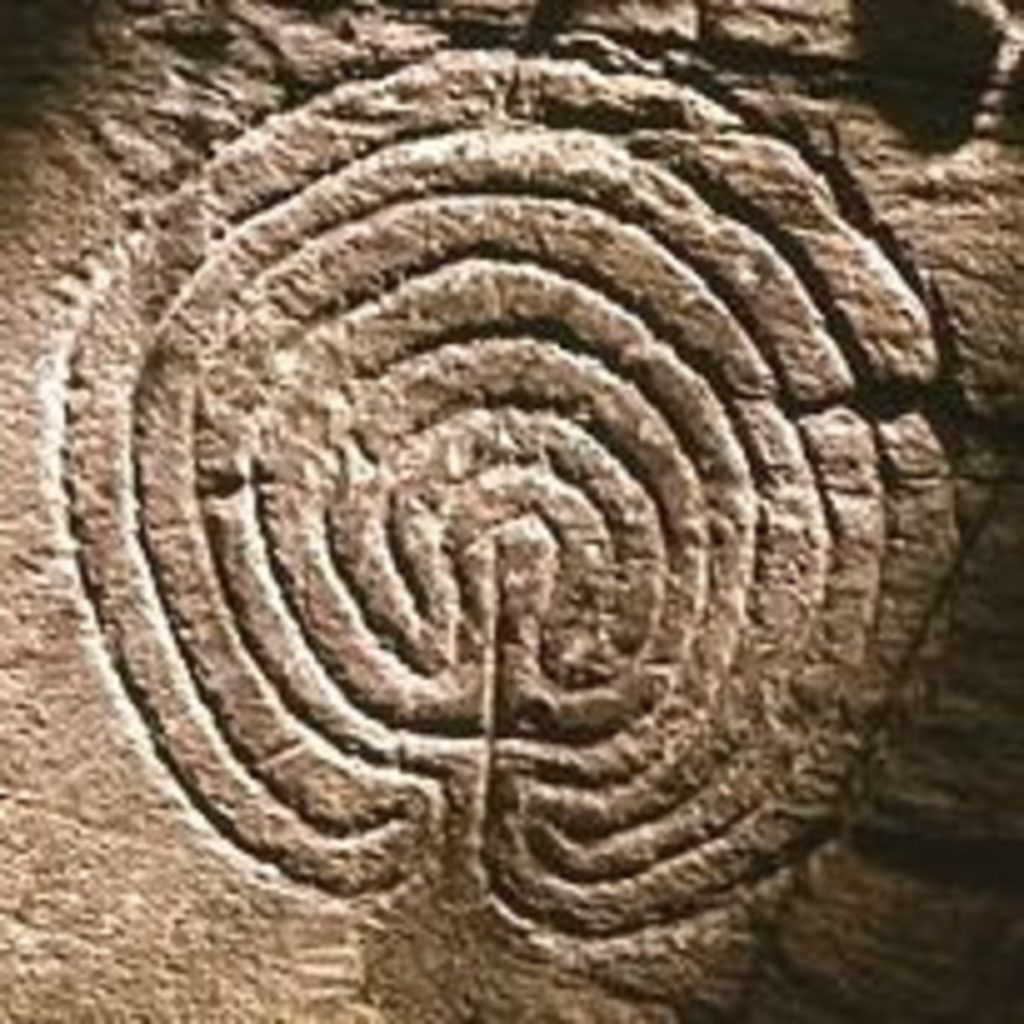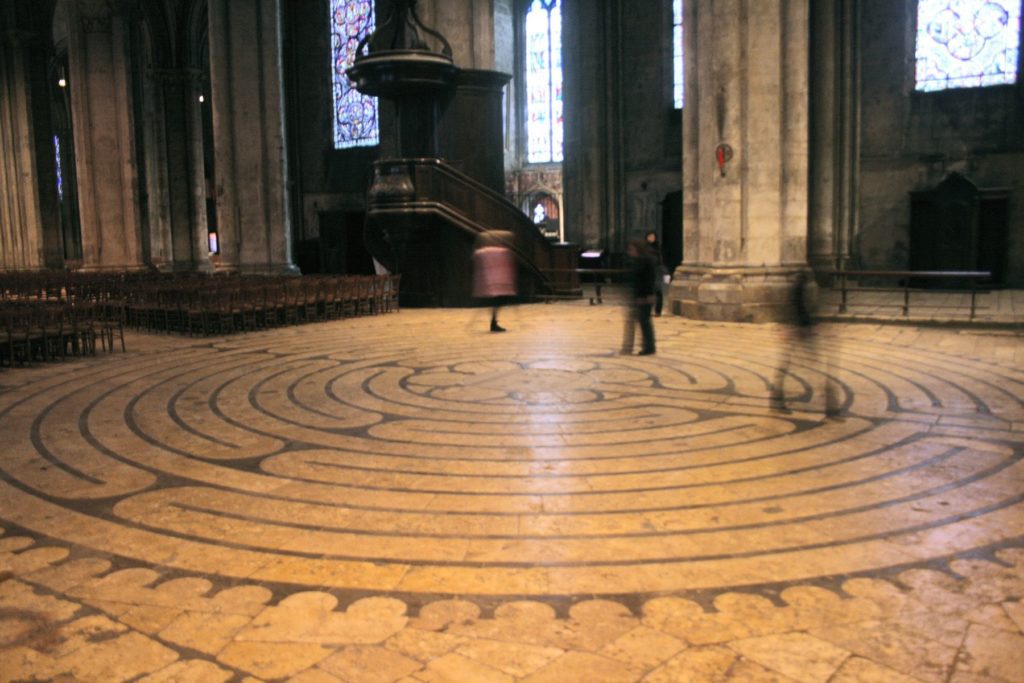APPLE VALLEY — The drive out to the Fairview Dry Lake — where a 60 foot labyrinth is located, is on a soft, sandy road. Many believe the ancient design represents the spiritual path or journey of life.
There are rumors that nearby neighbors created the labyrinth. Another claim in a Facebook post says that an artist and her brothers installed the design in two days. Although mystery surrounds its creation — historically the labyrinth design dates back 4,000 years.

The earliest examples of the labyrinth design are found on rocks and pottery dating from the Neolithic and Bronze Age periods. The design is also found on coins from Crete that symbolize the Greek mythology story of the labyrinth where the Minotaur was imprisoned.
Labyrinths can be found worldwide — France, Norway, India, British Isles and the Native American Hopi. It is the oldest meditation tool known to humans.

In the medieval Christian churches, many believed labyrinths were designed as a symbolic pilgrimage to the Holy land. One of the most famous features of the cathedral at Chartres is its intricate labyrinth located in the nave.
Unlike a maze, labyrinths only have one pathway starting from the entrance that leads to the center. Thought as a metaphor for life, the labyrinth teaches that if we continue the path we will learn our purpose and reach the central point of our existence.
Directions:
To access Fairview Dry Lake in Apple Valley, from Waalew Road, go past Central, turn right on Joshua Road, go past South, then turn left (east) on Cahuilla towards Laguna Seca.
Or from Hwy 18 towards Lucerne Valley, turn sharp left to Joshua Road, go past Thunderhead then turn right on Cahuilla, which eventually turns into dirt. Go about a mile.
Sources:
“Labyrinth in the Middle of Nowhere.” The Desert Way. https://www.thedesertway.com/labyrinth/
“A Brief History of the Labyrinth.” The Labyrinth Builders. http://www.labyrinthbuilders.co.uk/about_labyrinths/history.html

